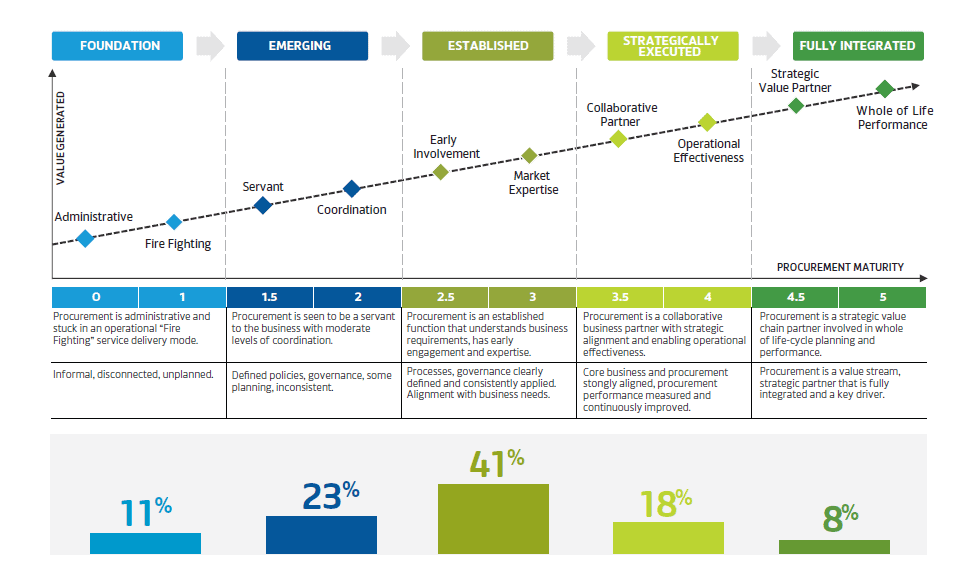Where are you on the procurement maturity curve?

Many procurement teams remain reactive to the business. Here is how to increase your procurement maturity.
While procurement has been around as a corporate support function for almost half a century, many organisations are still in the process of establishing a professional procurement function. This is a journey that ultimately leads to a maturity level that is reflective of the value that procurement can add to the business and the risk appetite of the organisation.
For example, for a fast-moving-consumer-goods company, supply chain capabilities are often a competitive advantage. Procurement is, therefore, fully integrated with the main value chain of the business and its maturity is high. On the other end of the scale, a small organisation that mainly delivers its services through employees, such as a law firm, is unlikely to have a large and mature procurement function.
Ultimately every organisation is making a decision of where its procurement function should sit on the maturity curve taking into account the cost to implement better practice and the value-add this function will generate.
So, where does your organisation sit on this maturity curve, and how does this compare to other organisations?
We surveyed 74 organisations in 2022 to shed some light on this question. The responses were self-reported and came from the procurement teams themselves. From previous research we know that this means the results have to be taken with a grain of salt, as the rest of the business typically considers procurement’s maturity lower than procurement itself.

Figure 1: The maturity of almost half of Australian procurement functions can be described as ‘established’ (N=74)
In 2022, 41% of procurement teams have largely moved to a maturity level where they are adding value to the conversation with the business. This is based on market expertise and relatively early engagement in the process.
Which contrasts with about a third (34%) of teams that are stuck at the administrative end. Either the function is in fire-fighting mode (Level 1, 11%), often with no dedicated procurement personnel or in an emerging stage (23%) where they are task-takers rather than shaping the form of the market approach.
Some procurement teams are in the more advanced levels of maturity, however these are often organisations that have supply chain capabilities as a core competency, such as the mentioned fast-moving consumer goods companies. Unsurprisingly, organisations with a big annual procurement volume are more likely to have a high level of maturity than those with a small procurement team and annual volume. Organisations on a Level 1 or Level 2 maturity on average have 4 FTE working in the procurement function.
It is important to keep in mind that the benchmark here is not to suggest all organisations should achieve a level 4 or level 5 maturity. Far from it! For most organisations an ‘established’ level 3 is sufficient – there are value for money considerations even in how you are setting up your procurement function.
Find the full research findings in our ebook Hitting the Reset Button







 We are all about sharing our expertise to help you and your organisation be the best it can be.
We are all about sharing our expertise to help you and your organisation be the best it can be.